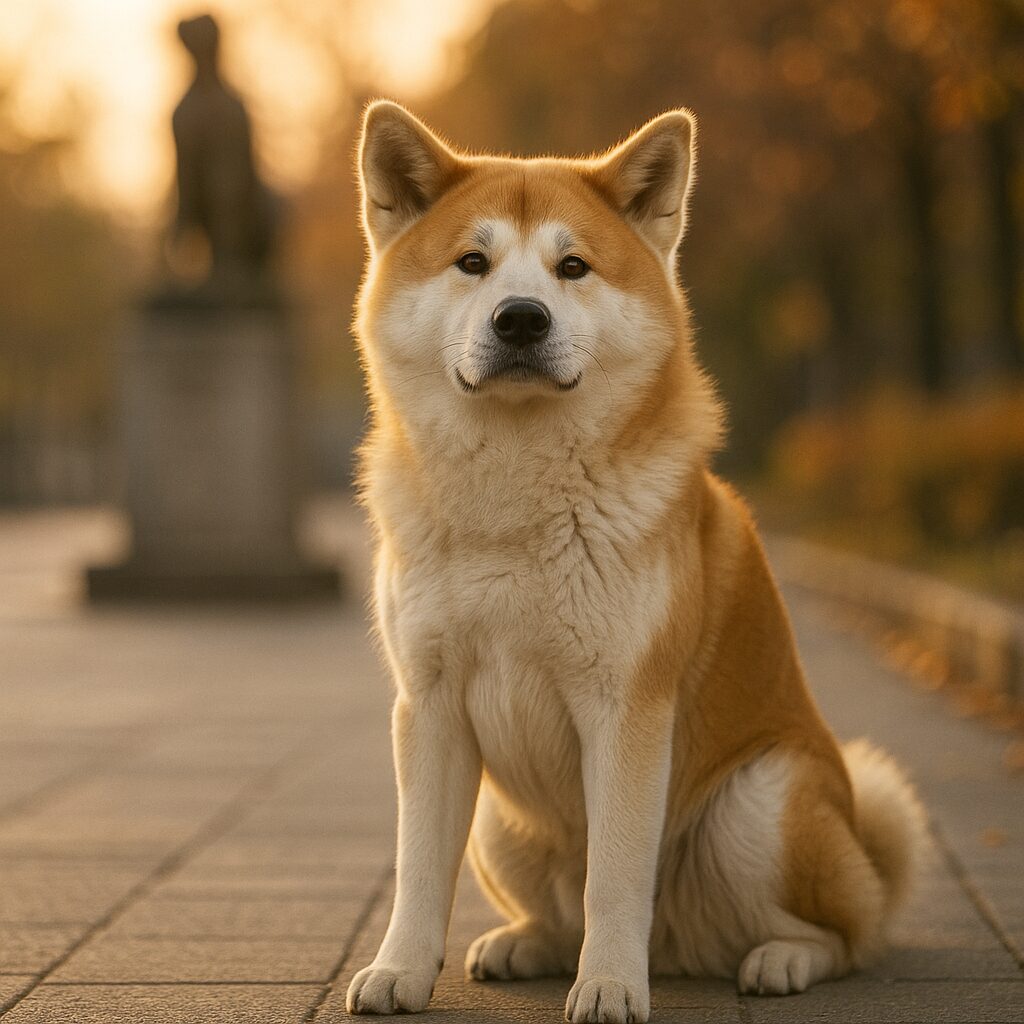When people think of loyalty embodied in an animal, one story almost always comes to mind: the tale of Hachikō, the Akita Inu who waited faithfully at Shibuya Station for his owner to return, even years after his passing. The bronze statue outside the bustling station has become one of Tokyo’s most visited landmarks, and the breed itself now symbolizes devotion that never wavers. Yet beyond the myth and monument lies the Akita itself: a dog of striking dignity, intelligence, and cultural importance in Japan.
A Breed with Ancient Roots
The Akita Inu is not a modern invention of selective breeding. It carries centuries of history. Originating in the Akita Prefecture of northern Japan, the dogs were first bred in the 17th century as hunting companions. Strong and resilient, they endured brutal winters and were trusted to track large game such as boar, elk, and even bears. Their stamina and sharp instincts soon made them indispensable, linking them with nobility and the samurai class.
During the Edo period, the Akita Inu became more than a hunter’s ally. They grew into status symbols reserved for the ruling elite. They were not simply pets but guardians of estates, protectors of households, and living emblems of the stoic loyalty admired in Japanese culture. As time passed, their role shifted from hunters to companions, yet their dignified temperament endured.
The Story of Hachikō
No discussion of the Akita would be complete without revisiting the story that gave the breed worldwide recognition. In the 1920s, a professor at Tokyo Imperial University named Hidesaburō Ueno adopted a cream-colored Akita puppy. The dog, Hachikō, quickly formed a routine: escorting his master to Shibuya Station in the morning, then returning in the evening to greet him after work.
In 1925, tragedy struck. Professor Ueno suffered a fatal cerebral hemorrhage during a lecture and never returned. Yet Hachikō continued to wait at the station, day after day, year after year. For nearly nine years, until his own death in 1935, the dog returned faithfully to the same spot in the hope of seeing his beloved owner again.
The story swept across Japan at a time of rapid modernization. Newspapers chronicled his devotion, schoolchildren learned his tale, and in 1934 a bronze statue of Hachikō was unveiled at Shibuya Station, with the loyal dog himself in attendance. Today, that statue remains one of Tokyo’s most popular meeting points, a timeless reminder of love that transcends both species and circumstance.
Traits That Inspire Reverence
Hachikō’s devotion was extraordinary, but it reflected qualities intrinsic to the breed. Akitas are known for:
-
Unwavering loyalty: Once bonded, an Akita forms a lifelong attachment and often becomes deeply protective of its family.
-
Quiet intelligence: Calm and observant, they act with careful deliberation rather than restless barking.
-
Cleanliness: Many owners describe them as cat-like, self-grooming and avoiding unnecessary mess.
-
Protective instincts: Historically bred as guardians, they remain courageous and dependable.
These traits make Akitas more than pets. They embody values central to Japanese culture: discipline, patience, and devotion.
Akita Symbolism in Japanese Culture
Beyond their practical roles, Akitas carry symbolic weight. They are often given as gifts to represent good health, long life, and protection. Families welcoming a newborn may receive a small Akita figurine as a charm for safety and well-being. Their likeness appears in artwork, talismans, and even modern pop culture, reinforcing their role as cultural icons.
Internationally, the Akita gained prominence in the 20th century. In 1937, Helen Keller visited Japan and was gifted an Akita named Kamikaze, making her the first American to own one. She later spoke warmly of its gentle and loyal nature. The gesture strengthened cultural ties between Japan and the United States, presenting the Akita as a living ambassador of Japanese values.
The Akita Today
Modern Akitas can be found worldwide, divided into two main lines: the Japanese Akita Inu, fox-like in refinement, and the American Akita, larger and more bear-like in build. Despite their differences, both share the same core traits of loyalty and dignity.
For many owners, living with an Akita is less about obedience and more about mutual respect. In return, the dog offers more than companionship—it offers an enduring bond that echoes the story of Hachikō himself.
Why the Legend Endures
Why does Hachikō’s story still resonate nearly a century later? Perhaps because it touches on a truth we long to believe: that love, once given, does not fade with time or circumstance. In a world often marked by change and uncertainty, the Akita stands as proof of steadfast devotion.
Every visitor who pauses at Shibuya to touch the paw of Hachikō’s statue is reminded of a simple lesson. Loyalty is timeless. Love, whether human or canine, can outlast even death.

